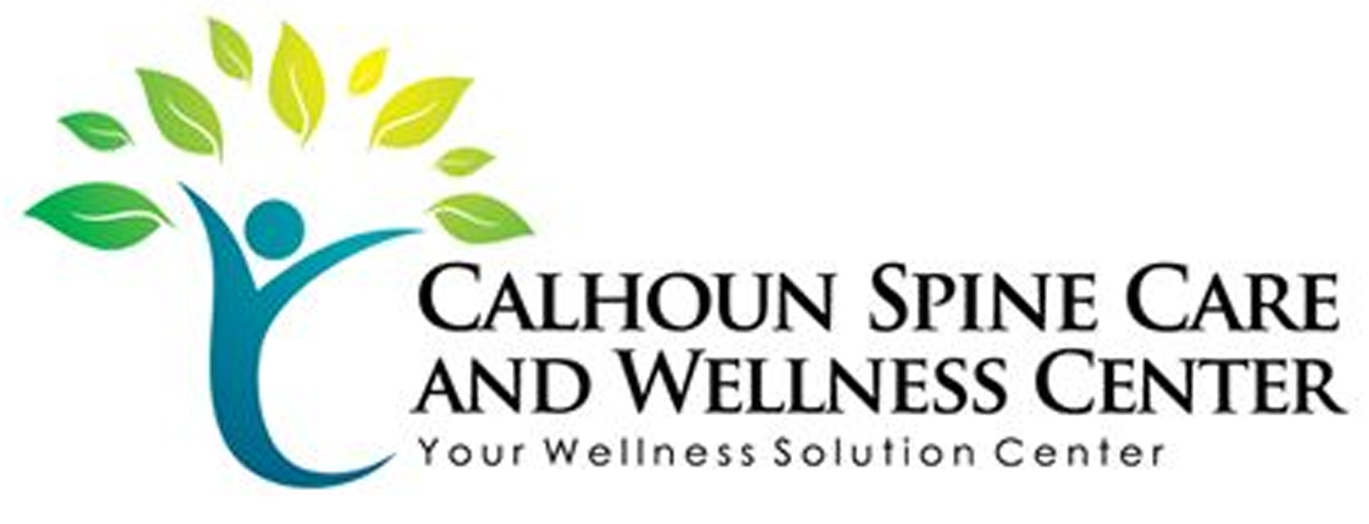If you're struggling with back pain, you might be wondering what options are available for relief. One approach worth considering is chiropractic care, which focuses on spinal manipulation and tailored treatment plans to address your unique needs. Many people find that regular visits to a chiropractor not only reduce discomfort but also enhance mobility and overall health. But how does this process work, and what can you expect during your first appointment? Understanding these aspects may just change how you view your back pain.
Understanding Back Pain
When you experience back pain, it can feel overwhelming as you try to pinpoint its cause. This discomfort can stem from various factors, including muscle strain, poor posture, or underlying medical conditions. Understanding these causes is important for seeking appropriate treatment and finding relief.
You might first reflect on whether you've engaged in any physical activities that could've led to strain or injury. Lifting heavy objects, sudden movements, or even repetitive motions can put stress on your back muscles. If you've been sitting for long periods without proper support, this too can lead to discomfort.
Your posture plays a significant role in how your back feels. Slouching or leaning forward can lead to imbalances that create pain over time.
Another aspect to reflect on is your general health. Conditions like arthritis, herniated discs, or sciatica can manifest as back pain. If your pain persists or worsens, it's important to consult a healthcare professional who can assess your symptoms and recommend appropriate tests.
Emotional stress can also contribute to back pain. When you're stressed, your body may tense up, leading to muscle tightness and discomfort. Being aware of your stress levels and addressing them can be a significant part of managing back pain.
Benefits of Chiropractic Care
Chiropractic care offers effective pain relief techniques that can help you manage your back pain more effectively.
You'll also notice improved mobility and flexibility, allowing you to move with greater ease.
Plus, regular visits can enhance your overall wellness, supporting your body's natural healing processes.
Pain Relief Techniques
Many people find relief from back pain through chiropractic care, which focuses on diagnosing and treating musculoskeletal disorders. Chiropractors use various pain relief techniques tailored to your specific needs.
One common method is spinal manipulation, where the chiropractor applies controlled force to your spine. This helps realign your vertebrae, reducing pressure on nerves and alleviating pain.
Another effective technique is soft tissue therapy. This involves targeted massage or stretching to relieve tension in your muscles and connective tissues. By addressing these tight areas, you can experience significant pain reduction and improved overall comfort.
Chiropractors may also employ modalities like electrical stimulation or ultrasound therapy. These techniques help decrease inflammation and promote healing in the affected areas.
Additionally, they often provide personalized exercise and stretching programs, empowering you to strengthen your back muscles and maintain pain relief over time.
Improved Mobility and Flexibility
Improved mobility and flexibility are among the top benefits of chiropractic care, with countless patients experiencing enhanced range of motion after treatment.
When your spine and joints are properly aligned, your body can move more freely, allowing you to engage in daily activities without discomfort or restrictions.
Chiropractic adjustments target the root causes of stiffness and tightness, enabling you to enjoy:
- Easier movement: You'll find it easier to bend, twist, and reach without pain.
- Enhanced athletic performance: Increased flexibility can lead to better performance in sports and physical activities.
- Reduced risk of injury: Improved mobility helps prevent strains and sprains during everyday activities.
Many patients notice significant improvements in their mobility after just a few sessions.
This newfound freedom can lead to a more active lifestyle, giving you the confidence to participate in activities you once avoided.
Whether it's playing with your kids, exercising, or simply getting through your workday, chiropractic care can help you regain the flexibility you need.
Don't let limited mobility hold you back—consider visiting a chiropractor to release your potential for a more dynamic life.
Enhanced Overall Wellness
When seeking relief from back pain, you might discover that chiropractic care not only addresses your discomfort but also enhances your overall wellness. Regular chiropractic adjustments can lead to improved nervous system function, which plays an essential role in your body's ability to heal and maintain balance. By aligning your spine, you support better communication between your brain and body, promoting overall health.
Additionally, chiropractic care can boost your immune system. When your body's systems are functioning at their best, you're less susceptible to illnesses and infections. You might also notice an increase in energy levels and a reduction in stress, as chiropractic adjustments help alleviate tension in your muscles and joints.
Moreover, many people experience improved sleep quality after starting chiropractic care. With less pain and discomfort, you can enjoy deeper, more restorative rest. This improvement in sleep can lead to better focus and productivity during the day, enhancing your overall quality of life.
Incorporating chiropractic care into your wellness routine can lead to a healthier, happier you. So, while you're addressing your back pain, you're also investing in your long-term health and well-being.
How Chiropractors Diagnose Issues
When you visit a chiropractor, they'll start by gathering your patient history to understand your specific issues.
Next, they'll conduct a thorough physical examination to pinpoint problem areas.
Sometimes, they might also use diagnostic imaging to get a clearer picture of what's going on with your spine and overall health.
Patient History Assessment
A chiropractor's thorough patient history assessment is essential for diagnosing back pain effectively. During your first visit, the chiropractor will ask a series of questions to gather pertinent details about your condition. This process helps them understand your unique situation and tailor a treatment plan just for you.
Here are some key aspects your chiropractor will focus on during the assessment:
- Symptom Details: They'll inquire about the nature, location, and duration of your pain.
- Medical History: Expect questions about past injuries, surgeries, or chronic conditions that could affect your spine.
- Lifestyle Factors: Your chiropractor may ask about your daily activities, exercise routines, and work environment to identify potential contributing factors.
Physical Examination Techniques
Chiropractors employ various physical examination techniques to diagnose back pain accurately. When you visit a chiropractor, they'll first assess your posture and spinal alignment. This helps them identify any irregularities that might contribute to your discomfort.
They'll also ask you to perform specific movements, like bending or twisting, to evaluate your range of motion and pinpoint areas of restriction.
Next, they'll conduct a series of palpations, where they gently press on different parts of your back and surrounding muscles. This tactile examination allows them to identify tenderness, muscle tightness, or spasms.
In addition, they may assess your reflexes and muscle strength to determine if nerve involvement is present.
Diagnostic Imaging Utilization
Diagnostic imaging plays an essential role in helping chiropractors pinpoint the source of your back pain.
By utilizing advanced imaging techniques, they can gain a clearer picture of what's happening inside your body. This process aids in developing a targeted treatment plan tailored to your specific needs.
Here are some common diagnostic imaging methods chiropractors may use:
- X-rays: These help identify bone fractures, misalignments, and degenerative changes in your spine.
- MRI scans: MRIs provide detailed images of soft tissues, allowing chiropractors to assess discs, nerves, and muscles.
- CT scans: While less common, CT scans offer an extensive view of your spine's structure and can reveal issues that X-rays might miss.
Common Chiropractic Techniques
Many effective chiropractic techniques can help relieve back pain and improve overall spinal health. One of the most common methods is spinal manipulation or adjustment. This technique involves applying controlled force to specific joints in your spine, helping to restore proper alignment and mobility. You may feel immediate relief after an adjustment, as it can alleviate pressure on nerves and reduce inflammation.
Another popular technique is the use of soft tissue therapy. This includes methods like massage, stretching, and trigger point therapy to release tension in the muscles surrounding your spine. By addressing these soft tissues, you can experience decreased pain and improved range of motion.
Diversified technique is another method you might encounter during your chiropractic visits. This involves a combination of spinal adjustments and specific movements designed to enhance your body's natural healing process. Chiropractors often tailor this approach to meet your individual needs.
You might also come across instrument-assisted techniques, which utilize handheld tools to perform adjustments. This can be particularly beneficial if you're uncomfortable with traditional manual manipulation.
Lastly, some chiropractors incorporate rehabilitative exercises into their treatment plans. These exercises focus on strengthening the muscles that support your spine, promoting better posture and reducing the likelihood of future pain.
What to Expect During Your Visit
Walking into a chiropractic office for the first time can feel a bit intimidating, but knowing what to expect can alleviate your worries. You'll quickly find that the environment is welcoming and designed to make you feel comfortable.
Here's what usually happens during your visit:
- Initial Consultation: You'll discuss your health history and current concerns. This helps the chiropractor understand your situation better.
- Examination: The chiropractor will perform a physical examination, which may include posture analysis and range of motion tests. They may also take X-rays if necessary.
- Treatment Plan: After evaluating your condition, the chiropractor will explain their findings and recommend a treatment plan tailored to your needs.
During your visit, you can expect open communication. The chiropractor will encourage you to ask questions and express any concerns. They want to guarantee you understand the process and feel at ease.
You might feel some minor discomfort during adjustments, but it should be manageable. Most patients actually report feeling immediate relief after the session.
Remember to wear comfortable clothing so you can move freely during your examination and treatment. If you're nervous, it's perfectly okay to let the chiropractor know; they're trained to help you feel relaxed.
Conditions Treated by Chiropractors
Chiropractors can help you address a variety of conditions that may be causing discomfort.
Whether you're struggling with sciatica, need help correcting your posture, or are recovering from a sports injury, these professionals have techniques designed for relief.
Understanding these treatment options can empower you to make informed choices about your health.
Sciatica Relief Techniques
When dealing with sciatica, you're not alone in seeking relief from the pain that can radiate down your leg. This discomfort often stems from pressure on the sciatic nerve, and chiropractors have effective techniques to help you find relief.
Here are some methods they might use:
- Spinal Manipulation: Chiropractors can perform adjustments to realign your spine, reducing nerve irritation and alleviating pain.
- Therapeutic Exercises: They'll guide you through targeted exercises designed to strengthen your core and improve flexibility, which can ease pressure on the sciatic nerve.
- Heat and Ice Therapy: Applying heat or ice can help reduce inflammation and soothe painful areas, making your recovery more comfortable.
Postural Correction Methods
Good posture is essential for overall health, as it can prevent a range of conditions that chiropractors often treat. When you maintain proper alignment, you reduce the strain on your muscles and joints, helping to prevent discomfort and pain. Chiropractors focus on postural correction methods to help you achieve and sustain good posture in your daily life.
During your sessions, your chiropractor will assess your posture and identify any imbalances. They'll provide targeted adjustments to realign your spine and improve your overall posture.
In addition, they may recommend specific exercises to strengthen your core and back muscles, making it easier for you to maintain proper alignment.
Chiropractors also educate you on ergonomics, guiding you on how to set up your workspace, car, and home environment to support good posture. By incorporating these strategies, you'll learn to sit, stand, and move more effectively, reducing your risk of pain and discomfort.
Ultimately, postural correction is a proactive approach to your health. By working with your chiropractor, you can develop habits that not only alleviate back pain but also enhance your overall well-being.
Sports Injury Rehabilitation
In the domain of sports, injuries can occur suddenly or develop over time, often sidelining athletes and active individuals.
Whether you're experiencing a sprain, strain, or chronic pain, chiropractic care can be an effective solution for rehabilitation. Chiropractors specialize in diagnosing and treating sports-related injuries, helping you regain strength, flexibility, and mobility.
Here are a few ways chiropractors can assist in your recovery:
- Pain Relief: Chiropractic adjustments can alleviate pain by improving joint function and reducing inflammation.
- Enhanced Performance: Regular chiropractic care can help you achieve ideal physical function, allowing for improved athletic performance.
- Preventive Care: Chiropractors can identify and correct biomechanical issues, reducing the risk of future injuries.
Chiropractic Care vs. Traditional Medicine
Many people find themselves weighing the benefits of chiropractic care against traditional medicine when seeking relief from back pain. Chiropractic care focuses on the spine and its alignment, using hands-on techniques to adjust misalignments that may be causing discomfort. If you choose this route, you might experience a more holistic approach to pain management, emphasizing the body's natural ability to heal itself.
On the other hand, traditional medicine often involves medications, physical therapy, or even surgical options. You may find that while these methods can provide immediate relief, they sometimes mask the underlying issue rather than addressing it directly. Medications, for example, might help ease pain but could also come with side effects and dependency risks.
When comparing the two, it's crucial to reflect on your specific needs and preferences. If you're looking for a natural, drug-free option, chiropractic care might be your best bet. Many patients appreciate the personalized treatment plans that chiropractors offer, which often include exercises and lifestyle recommendations tailored to your unique situation.
However, if your back pain stems from a more serious medical condition requiring immediate intervention, traditional medicine could be necessary.
Ultimately, the best approach may involve a combination of both chiropractic care and traditional medical practices. By consulting with healthcare professionals from both areas, you can develop a thorough plan that effectively addresses your back pain while ensuring you're taking the safest, most effective route toward recovery.
Lifestyle Changes for Pain Relief
Making lifestyle changes can be a powerful way to manage and relieve back pain. You mightn't realize how small adjustments in your daily routine can greatly impact your comfort and overall well-being.
By taking proactive steps, you can enhance your recovery and prevent future discomfort.
Consider these three key lifestyle changes:
- Stay Active: Regular physical activity strengthens your back muscles and improves flexibility. Aim for low-impact exercises like walking, swimming, or yoga. These activities can help reduce stiffness and promote better posture.
- Maintain Good Posture: Pay attention to your body mechanics throughout the day. Whether you're sitting, standing, or lifting, using proper posture can alleviate unnecessary strain on your back.
Invest in ergonomic furniture, and make a conscious effort to align your spine correctly.
– Manage Stress: Stress can exacerbate back pain. Engage in relaxation techniques like mindfulness, meditation, or deep breathing exercises.
Reducing stress not only helps with pain management but also improves your overall mental health.
Patient Success Stories
Countless individuals have turned their lives around by sharing their personal journeys with back pain. You might relate to the story of Anna, who struggled for years with chronic pain. After trying various treatments with little success, she decided to see a chiropractor. Within weeks, she noticed significant improvements. Her mobility increased, and she could finally enjoy activities she'd given up, like hiking.
Then there's Mike, a busy office worker. He spent long hours hunched over his computer, resulting in persistent back pain. Frustrated, he sought chiropractic care. Mike was amazed at how quickly his discomfort lessened. Regular adjustments not only alleviated his pain but also improved his posture, boosting his confidence at work.
Another inspiring tale is that of Sarah, a mother of three. Lifting and carrying her children led to severe back issues. After her first chiropractic appointment, she felt a relief she hadn't experienced in years. As her treatment progressed, she regained her energy and was able to engage fully with her kids again.
These stories highlight the transformative power of chiropractic care in managing back pain. Whether you're dealing with acute discomfort or chronic issues, real patients have found hope and healing. Their experiences remind you that you don't have to live in pain.
With the right approach, you too can reclaim your quality of life and enjoy the activities you love.
When to Seek Chiropractic Help
Knowing when to seek chiropractic help can be essential for managing back pain effectively. If you're experiencing persistent discomfort, it's important to recognize the signs that indicate professional intervention might be necessary. Here are a few key indicators to take into account:
- Chronic Pain: If your back pain lasts for more than a few weeks and doesn't improve with home remedies, it's time to consult a chiropractor.
- Limited Mobility: When you find it difficult to perform daily activities or movements, like bending or lifting, a chiropractor can help restore your range of motion.
- Nerve Symptoms: If you're experiencing numbness, tingling, or weakness in your legs or arms, don't wait. These symptoms could indicate nerve involvement that requires immediate attention.
Chiropractors specialize in diagnosing and treating musculoskeletal issues, particularly those related to the spine. They can offer personalized treatment plans that may include spinal adjustments, physical therapy, and lifestyle recommendations tailored to your needs.
Delaying treatment can lead to further complications, so it's wise to trust your instincts. If something doesn't feel right, seeking help sooner rather than later can make a significant difference in your recovery.
Conclusion
If you're struggling with back pain, consider visiting a chiropractor. They can assess your individual needs and create a personalized treatment plan that addresses the root causes of your discomfort. With techniques like spinal manipulation and tailored exercises, you can experience relief, improved mobility, and better posture. Don't let pain hold you back—take the first step towards a healthier, more active life by seeking chiropractic care today. Your well-being is worth it!



